Hunting for Northern Lights: Aurora Borealis in Art
With mesmerizing colors dancing in the night sky, witnessing an aurora must feel like being inside of a painting. What are the northern lights and...
Marta Wiktoria Bryll 20 January 2025
Venice is hands down one of the most beautiful cities in the world. Every nook and cranny looks like a theater or a movie set. It is no wonder that it was not only an essential stop during the Grand Tour in the 18th century (more on that later), but also an inexhaustible subject for many artists through the years. Let us explore Venice in art.
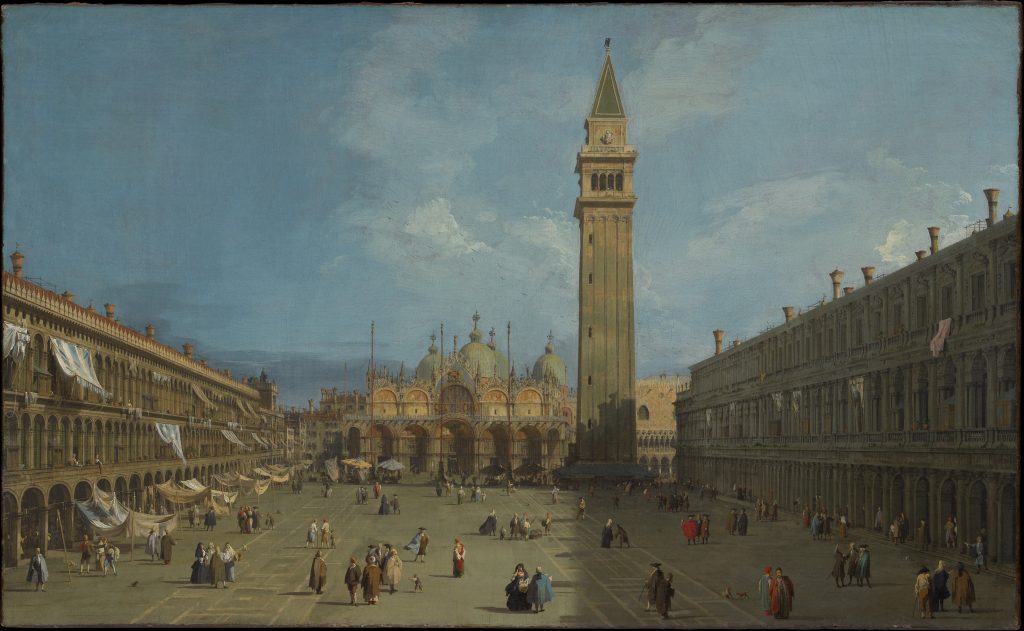
Canaletto (Giovanni Antonio Canal), Piazza San Marco, late 1720s, Metropolitan Museum of Art, New York, NY, USA. Museum’s website.
Canaletto puts us right in the center of Venice, depicting one of the city’s most famous monuments, the Basilica of Saint Mark, along with the piazza in front of it. The buildings around the piazza are still the same to this day.
During the 18th century, young men of age and means from all over Europe came to visit Venice as part of the Grand Tour, an educational trip to the most historical cities of Europe. Canaletto produced many paintings featuring the magnificent vistas and monuments of Venice to sell them to upper-class tourists, just like we would buy a postcard or some other memento.
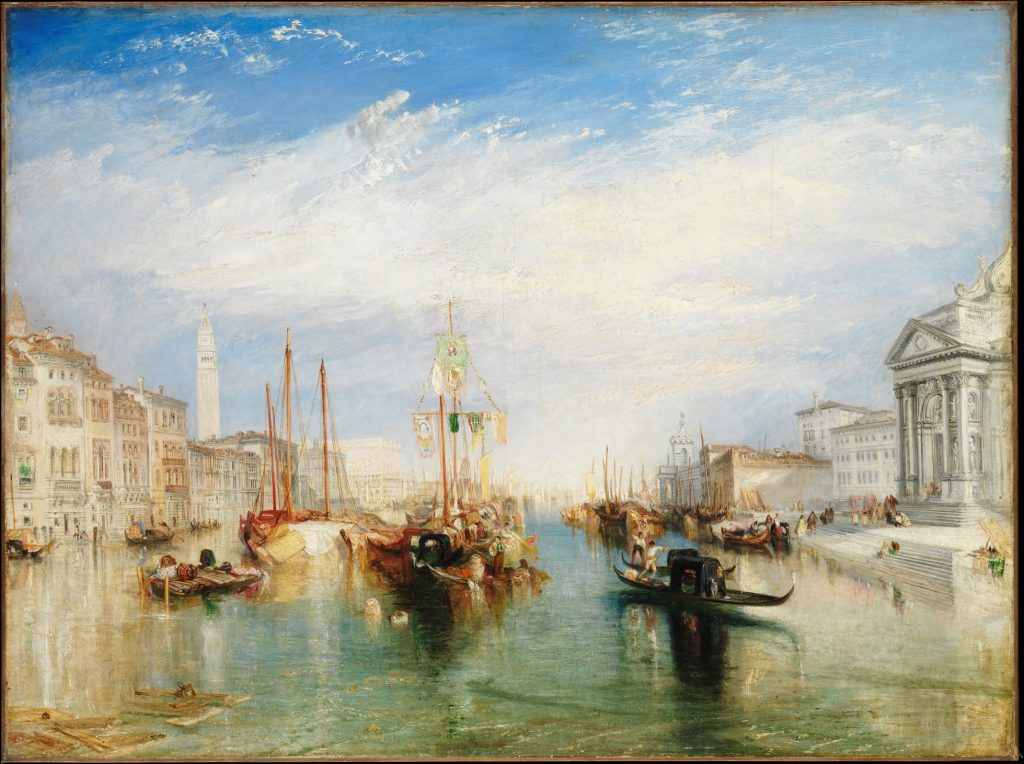
J.M.W. Turner, Venice From the Porch of Madonna della Salute, 1835, Metropolitan Museum of Art, New York, NY, USA. Museum’s Website.
William Turner shows the widest channel of Venice, the Grand Canal, on a busy day. Gondolas and ships float gently on the water while, to the right, on the porch of the Santa Maria della Salute, tourists and Venetians take their morning stroll.
The enormous white church is a votive offering, a big thank you to Our Lady of Good Health, by the Republic of Venice, for saving the city from the black death in 1630. To this day, it is one of the most important monuments of the town, situated between the Galleria dell’Accademia and the Punta della Dogana. To the left, the magnificent palazzos seem to hover above the Canal, their facades reflecting on the water’s surface.
Turner based the canvas on pencil drawing from his first visit to the city. He exhibited this work in 1835 at the Royal Academy in London.
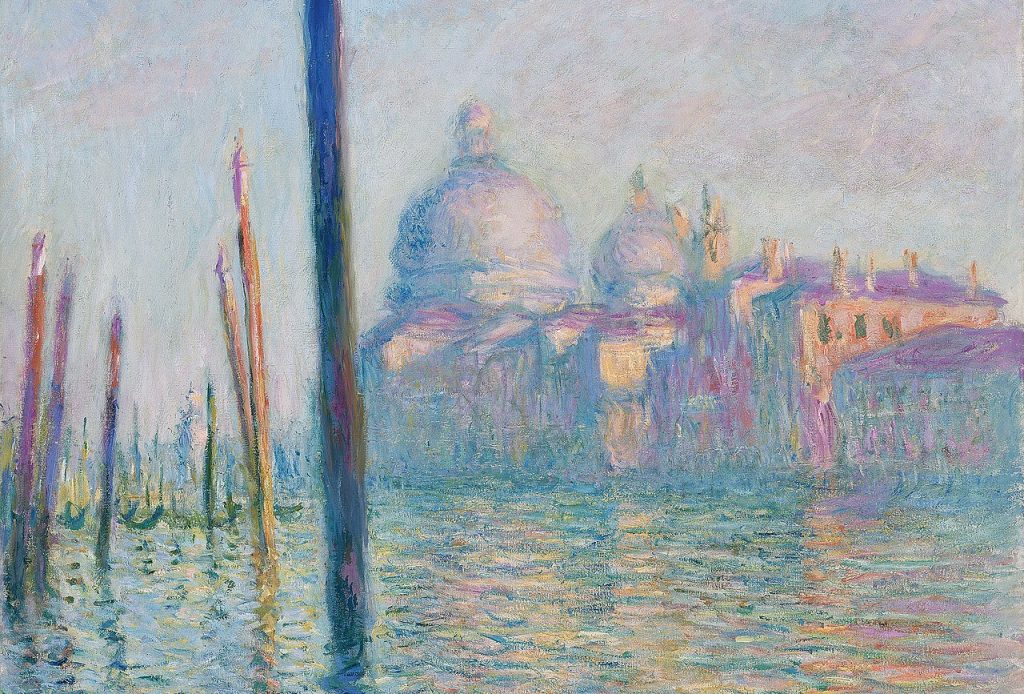
Claude Monet, Grand Canal, 1908, Museum of Fine Arts, Boston, MA, USA. Wikimedia Commons (public domain).
Claude Monet was mesmerized by the unique nature of Venice, a city that seems to float in the water. Here, he offers a similar view to Turner’s Grand Canal with the Santa Maria della Salute. However, the approach is different. Monet is more interested in the reflection in the water and the play of the light than the actual monument.
As he did with his famous Haystacks, Monet created 37 paintings of this view at different times of day and with varying weather conditions. In the foreground, we see the wooden poles, which Venetians use as parking spots to this day.
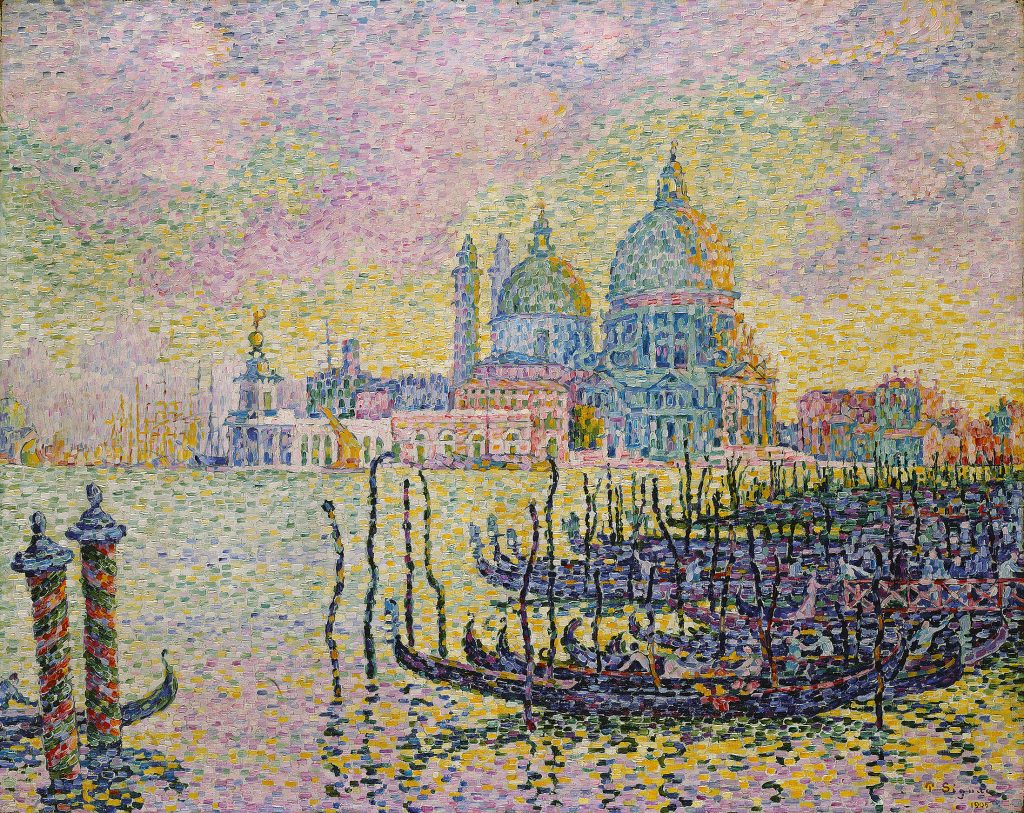
Paul Signac, Entrance to the Grand Canal, 1905, Toledo Museum of Arts, Toledo, OH, USA. Museum’s website.
The Grand Canal and the church of the Salute are many artists’ favorite views of Venice. Here, we see the church and the Punta della Dogana, now a Сontemporary Art Museum but, at that time, the customs building, from across the laguna. In the foreground, the gondolas float gently on the water.
Paul Signac was one of the front runners of pointillism, a neo-impressionism style inspired by the theories of French chemist, Michel Eugène Chevreul. According to the theory, dots of different colors placed side by side, when viewed from a distance, mix in the eye to create a new color.
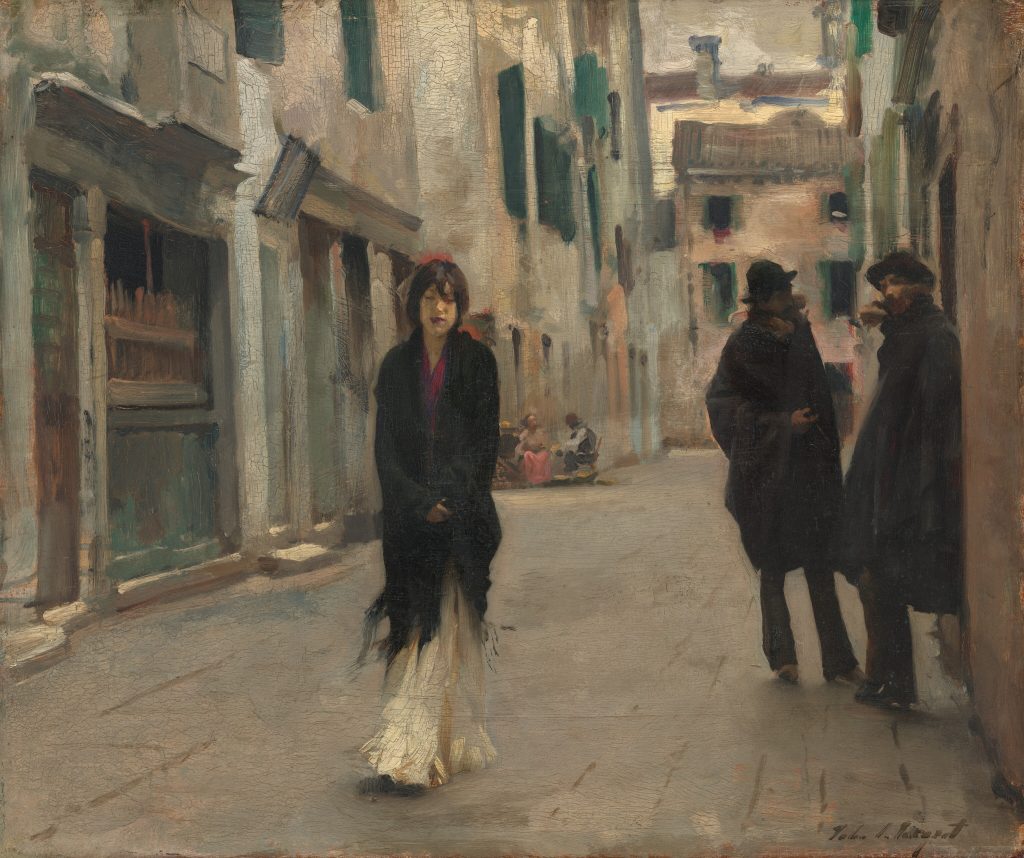
John Singer Sargent, A Street in Venice, 1882, National Gallery of Art, Washington, D.C., USA. Museum’s website.
John Singer Sargent, possibly the greatest portraitist of the 19th century, spent most of his life in Europe. He traveled to Venice, as many artists did at the time, but instead of painting the timeless monuments of the city, he was more interested in the city that looms behind the Grand Canal and the flocks of tourists.
A Street in Venice focuses on the everyday people that inhabit the city. A young woman walks the streets clutching her shawl. On the right, we see two men observing her in the shadows as she walks by. The woman looks uncomfortable, perhaps she has noticed them, or maybe they made their presence known by whistling or catcalling at her. We can’t be sure, as their faces hide in the shadows.
DailyArt Magazine needs your support. Every contribution, however big or small, is very valuable for our future. Thanks to it, we will be able to sustain and grow the Magazine. Thank you for your help!